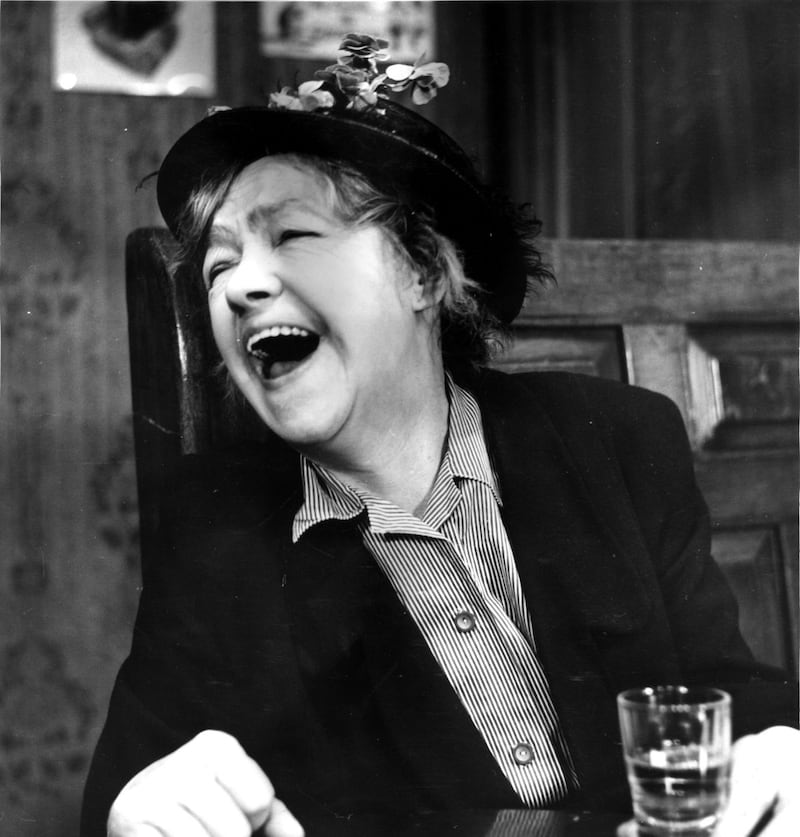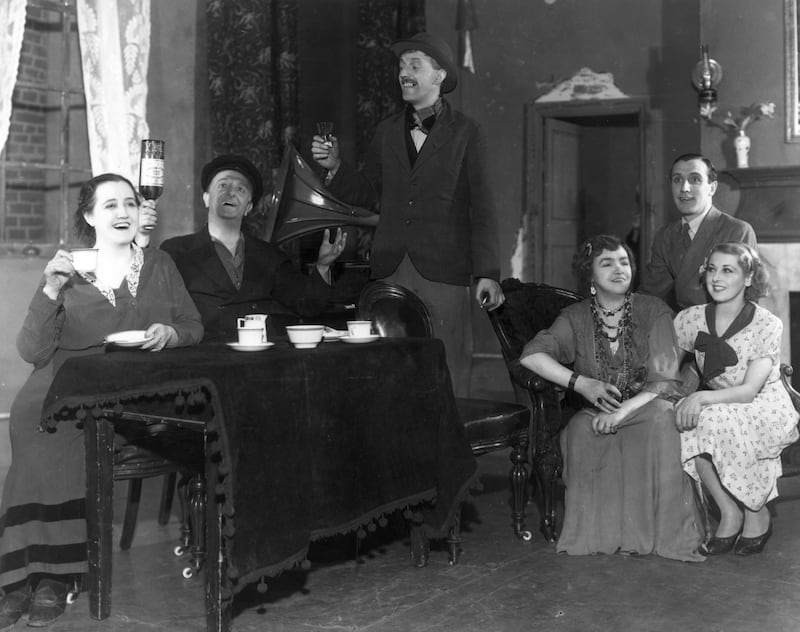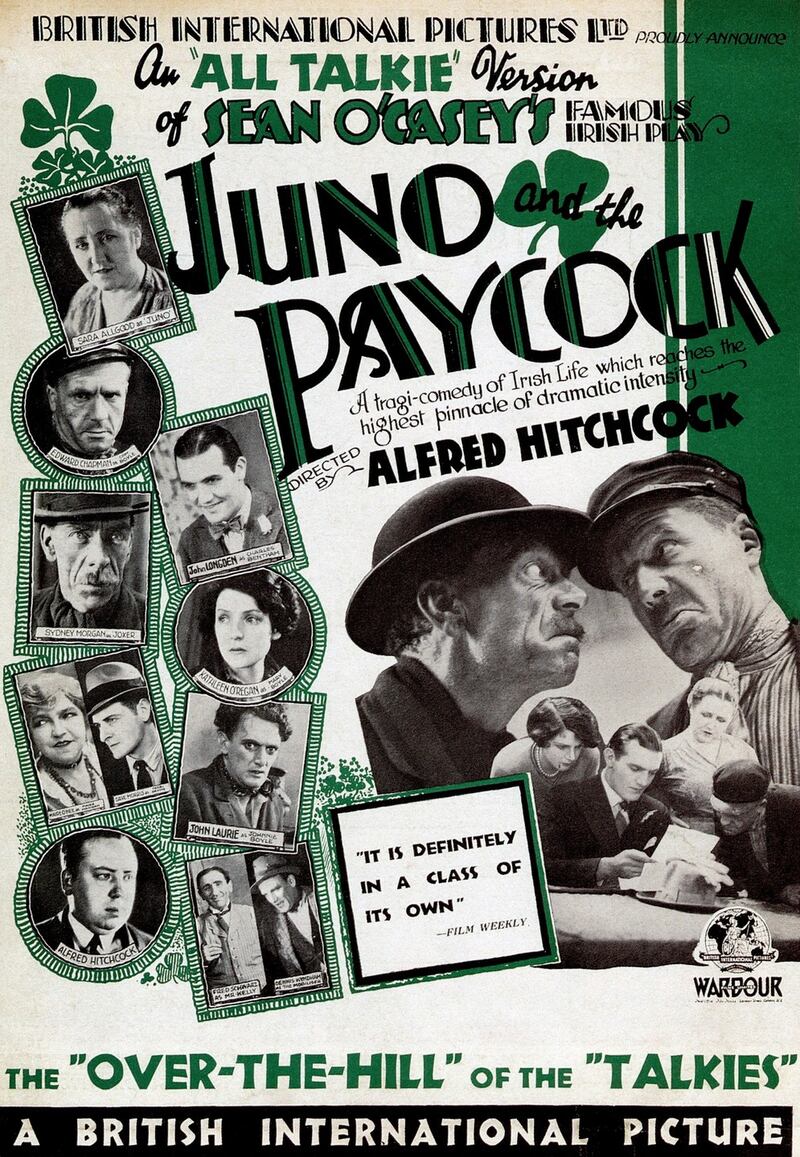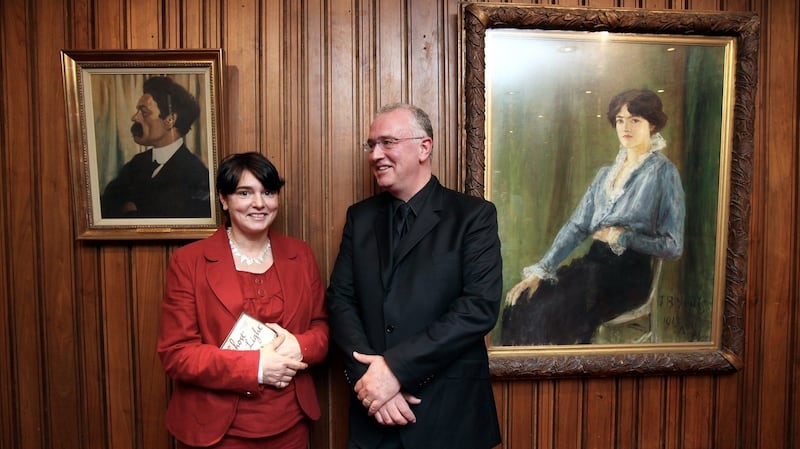The first Pegeen Mike Flaherty in JM Synge’s The Playboy of the Western World was played by Molly Allgood – stage-name, Maire O’Neill. At the time of the play’s premiere in 1907 she had just turned 20. She went on to become one of the most accomplished and successful of that remarkable generation of early Abbey performers.
But when she took on Pegeen Mike she had not been quite as much in the limelight as some other company members, foremost among them her big sister Sara Allgood. (Molly took her stage-name to distinguish herself from the celebrated Sara.) No part she ever had – or ever would have – could equal Pegeen. This was her great chance. Initially, though, it must have seemed anything but.


As hardly needs repeating, it’s only in a crudely literal sense that the first run of The Playboy could be called a smash hit. Yet, the row and the ructions which greeted the play are only half the story. Indeed, in a curious way, the audience’s notorious reaction was a virtual echo-chamber for the conflicts that bedevilled Synge and Molly off-stage and behind the scenes as they acted out their private, impassioned and exhaustive roles as star-crossed lovers.
An odder couple than the two of them it would be hard to find. By 1907, the year of The Playboy, they’d been seeing each other for about two years. Synge had his 36th birthday that year, so for a start they were very nearly on opposite sides of a generation gap. Molly was a daughter of Mary Street and liked the city best. Synge was from a landed background with country roads his preferred haunts. He was a graduate of Trinity and had lived in Paris. She had been in an orphanage and had come to the Abbey from behind a counter in Switzer’s.
Even temperamentally there was a great gulf between them, he a cautious type, she a caution. A cockeyed Romeo and Juliet the pair of them made. And besides their backgrounds and personalities they also had to contend with the tenor of the times. Sectarian questions raised their ugly heads. On both sides, family opposition was strong, especially Synge’s, not that the Allgoods’ view of the relationship was particularly enlightened either.
Nor were the playwright’s fellow-managers at the Abbey, Yeats and Lady Gregory, what you’d call supportive. Management and labour doing a line – to use a phrase whose meaning has changed utterly between then and now – could hardly be condoned. That kind of thing could lead to mere anarchy breaking out in the ranks, potentially resulting in a perception of managerial control being unable to hold. At this remove, a whiff of “not an inch” may be detected in this stance, or perhaps a dread of sexual insurrection suggestive of the cultural climate of the time. Back then, though, the Abbey that WB and Lady G regarded so protectively was still pretty much in its infancy, far from being a going concern, much less a cultural heirloom. Its survival was so vital and yet so parlous that even love could threaten it.


And for Synge and Molly, love it was. It must have been. Nothing less could have kept them trusting and together despite the pressures from inside and outside on them. Nothing less could have explained their constant letter-writing and non-stop anxiety about having replies by return. What else but love could have withstood the elaborate efforts to schedule good times and safe places to be together, which almost invariably meant trysting in wild Wicklow, far from the vigilant social world they knew and where they were known, and where, it seemed, nobody was glad they had each other.
Theirs was a lonely love, sweeter for that, in ways, perhaps, but a love in spite of the world, all the same, somewhat obsessive on his part, somewhat abandoned on hers, following no path but their own. Geographically and every other way, it’s as if they were bound and determined to go to whatever lengths necessary to affirm to one another that, as the amazed Pegeen herself discovers, “The heart’s a wonder”.
Yet, even when they had nobody but themselves to deal with, the course of this true love of theirs didn’t run smooth. Synge, as the senior partner, so to speak, was all for taking Molly in hand with the aim of elevating her grade of culture, improving her taste, ridding her of what he considered to be common in her behaviour, outlook and dress, and generally playing the part of Pygmalion to her Galatea.
But Molly was no model in marble. World, flesh and devilment were fundamental to her makeup, and she didn’t take very kindly to his course of correction. Who would? Who’d blame her for being young? Which is not to say that there wasn’t something of the harum-scarum about her, or that she couldn’t resist winding Synge up with displays of social or emotional coat-trailing. Still, even when jolting over the bumps in the road that their different versions of themselves brought out, their differences did not produce a melodrama of thundery brows and showers of tears. Yes, there were sulks and tiffs galore. But there’s also an air of light-hearted role-playing too – Synge the besotted elder, Molly the charming soubrette, he the stony evangel of the done thing, she the devil-may-care live-wire.
Such exaggeration and pretending comes across from the names Synge gave them. He signed his letters to Molly “Your Tramp”, letting on not only to be socially beneath her but also someone who was here today and gone tomorrow. And he addressed her as his “Changeling”, inspired by both her volatile personality and her elusive qualities, as though she were one of those creatures from myth or folklore synonymous with fleeting allure – a nymph or fairy woman. The names have something arch and stagey about them, certainly. But they also hint at deeper dimensions of the reality their connection created, implications of being outsiders, of being birds of passage, of not being tied down by responsibilities or by the prevailing, high-handed order of the day. Tramp and changeling are masks conveying some of the essential features of freedoms consciously pursued and wholeheartedly embraced.
And if play they did, that, like everything else about their love story, showed the courage they had, the courage they increasingly needed as time went on. In the summer of 1907, shortly after they became engaged, Synge underwent an operation on his neck glands. From that point on, it became more and more clear that he was not well, and a further operation the following year finds an inoperable tumour.
But Synge is not told this, and his letters to Molly now, full of practicalities about setting up house and their life ahead together, make heartbreaking reading. If it wasn’t plain before, it’s undeniable at this stage that Molly was life to him. He had to have her by him, her youth, her vivacity, her instincts, her daring. For her part, she knew enough to know that she was wanted, and she stayed. Not everybody her age would have found it in themselves to see things through.
Even as Synge’s end approached, they played on, make-believe clarifying, perhaps, what was at stake, giving the inevitable a form, a setting and an occasion in which it might be safely contemplated, thanks to theatre’s indispensable combination of intimacy and distance. The dying playwright did as his imagination prompted. He began a new play, Deirdre of the Sorrows, a play for Molly, and they spent some of their time together going over extracts from it. Like so much else, Deirdre was left incomplete. But Molly helped to make it whole, and early in 1910 premiered it to acclaim, one member of the audience noting particularly how “sincere and restrained” her performance was, which was no more than fitting for an event that was both a public act of mourning and a testament to private steadfastness.

Synge died in March 1909. He was 37, Molly 22. “Oh, my grief, I’ve lost him surely.” That’s Pegeen’s lament for her departing playboy. According to Yeats, Molly said Synge “used often to joke about death with me and one day he said, ‘Will you go to my funeral?’ and I said, ‘No, for I could not bear to see you dead and the others living.’’’ (Synge turned the same remark into a poem.) So, she didn’t go to Mount Jerome that day, nor did the Synge family want her to. How she did mourn can only be imagined.
Yet, like the trooper that actors tend to be, her career continued, bringing her appreciation and esteem at home, and even more so internationally, before she branched out beyond the Abbey company onto Broadway and the West End and, eventually, into many not quite so stellar film appearances. (A sense of her presence and delivery can be had from her Maisie Madigan in Alfred Hitchcock’s version of Juno and the Paycock – thank you, YouTube.)
She married twice, the second time to an old pal from Abbey days, Arthur Sinclair, known to all as Mac – he was born Francis McDonnell. That marriage was not a success, unlike her first in 1911 to the drama critic and journalist GH Mair, by whom she had two children. Mair died suddenly in 1926 (she married Mac later the same year). Alcoholism, poor health and the death of her airman son marked her declining years. She died in 1952 as a result of burns sustained from having fallen into the fire at her London flat.
All who saw her perform were greatly struck by her natural grace, her disciplined professionalism, and above all by her voice’s melodious range and resonance. If there had never been a Synge, she would have still been great, “a player of genius”, as Yeats called her. With Synge, however, she entered into legend, not only by virtue of the legendary roles he wrote for her but by the unique union they made, freely chosen and bravely borne.
What Molly thought afterwards about it all is largely a matter of conjecture. But she did name her two children John and Pegeen.
George O'Brien's play The First Pegeen runs from September 24th to October 12th at Bewley's Lunchtime Theatre, Dublin.


















